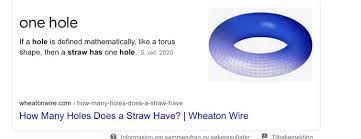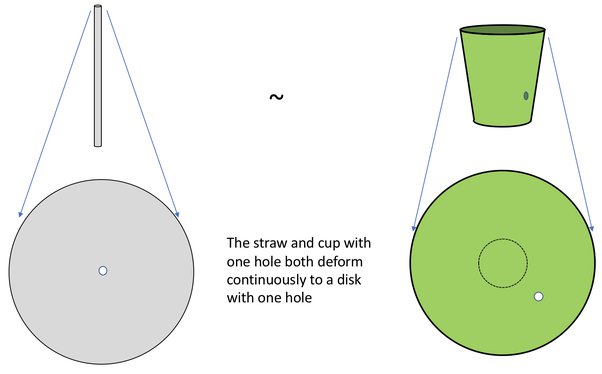Introduction to How Many Holes Does a Straw Have
Ever looked at a straw and wondered, “How Many Holes Does a Straw Have?” It seems like a simple question at first glance, but once you start thinking about it, it quickly turns into a mind-bending philosophical puzzle. Is it one continuous hole? Or are there two separate holes? The internet has been debating this for years, with scientists, mathematicians, and casual thinkers chiming in. In this article, we’ll dive deep into the science, logic, and philosophical perspectives behind this perplexing question.
Understanding the Basics: What Is a Hole?
Before we can answer how many holes a straw has, we need to define what a hole actually is. The term seems straightforward, but it’s surprisingly complex when examined closely.
Definition of a Hole
A hole is generally described as an empty space or void that goes through a surface or object. In everyday terms, we think of holes as gaps or openings—like a hole in a piece of paper or a pothole in the road.
How Many Holes Does a Straw Have, in mathematics and topology (the branch of math dealing with shapes and spaces), a hole is a bit more abstract. Topologists describe a hole as a feature of a shape that cannot be filled or removed without altering the shape’s fundamental structure.
Key takeaway: In a simple sense, a hole is an opening that allows passage through an object. But depending on your perspective, that definition can shift.

Types of Holes
To better understand the straw debate, let’s categorize holes:
- One-sided hole: Think of a cup. It has a hole at the top, but it doesn’t go all the way through.
- Two-sided hole: This is more like a tunnel or a pipe, where there are two open ends.
- Surface hole: A dent or crater in an otherwise solid surface, like a pothole.
A straw How Many Holes Does a Straw Have seems to fit into the two-sided hole category—a tube with two open ends. But some argue it could be one continuous hole. Let’s explore both sides of the argument.
The One-Hole Argument: A Continuous Passage
One of How Many Holes Does a Straw Have the most popular views is that a straw has only one hole. Proponents of this argument believe that a straw is essentially a continuous tunnel, and a tunnel is just one elongated hole.
Logic Behind the One-Hole View
Imagine drilling a hole through a piece of wood. Even though there are two openings (one on each side of the wood), you’d still say you drilled one hole, right? This is the same logic used for the straw. The hole goes through the entire length of the straw, connecting the two ends.
Supporters of How Many Holes Does a Straw Have this view also point to topology, where a straw is seen as a shape with one continuous void passing through it. In topological terms, it doesn’t matter how long or short the tunnel is—it’s still just one hole.
Examples in Everyday Life
- Donut: A donut has one hole in the middle, even though you can see it from both sides.
- Pipe: Plumbers refer to a pipe as having one passage, not two separate holes.
This perspective is How Many Holes Does a Straw Have widely accepted by mathematicians and topologists, who often view objects based on their overall structure rather than the number of openings.
The Two-Hole Argument: Two Distinct Openings
On the other hand, many people argue that a straw has two holes—one at each end. This perspective is based on the idea that each opening should count as a separate hole.
Logic Behind the Two-Hole View
Consider a piece of paper with a hole punched through it. Most people would say it has one hole. But if you punch two separate holes in the paper, you now have two holes. Applying this logic to a straw, some argue that each opening is a separate hole.
From a practical How Many Holes Does a Straw Have perspective, if you were to block one end of a straw, the air or liquid wouldn’t be able to pass through. This suggests that the two openings serve as distinct entities.
Examples in Everyday Life
- Buttons: A button with two holes is described as such, even though the holes are connected by the fabric.
- Tunnels: Engineers often refer to tunnels as having two portals—an entrance and an exit.
While this argument is How Many Holes Does a Straw Have more intuitive to the average person, it doesn’t align as neatly with the mathematical perspective.
What Does Science Say? The Topological Perspective
In mathematics, specifically topology, a straw is often classified as a shape with one hole. Topology looks at objects based on their essential properties—things that don’t change even if the object is stretched or bent.
Topological Equivalence
In topology, a straw is equivalent to a donut or a coffee mug. These objects all have one continuous hole that passes through them. How Many Holes Does a Straw Have A donut has one hole in the middle, and a coffee mug has a handle with a hole in it.
From this viewpoint, the length of the straw or the shape of its openings doesn’t matter. It’s the continuous passage that defines it.
Key insight: In topological terms, a straw has one hole, no matter how many openings it has.
Philosophical Considerations: The Nature of Holes
The question of how many holes a straw has isn’t just a scientific or mathematical debate. It also delves into philosophical territory. How Many Holes Does a Straw Have What exactly is a hole? Is it the absence of matter? Or is it a feature of the object it passes through?
Absence vs. Presence
One philosophical view is that holes don’t actually exist as objects; they’re merely the absence of something. According to this view, a straw doesn’t have any holes—it has a shape that allows for a continuous passage.
Another perspective is that holes are distinct features. From this viewpoint, each opening of the straw counts as a separate feature, How Many Holes Does a Straw Have meaning the straw has two holes.
Language and Perception
The way we talk about holes also influences our perception. For example, we say a person has pierced ears (plural) even though the earring passes through one continuous hole in each ear.
This linguistic ambiguity adds another layer of complexity to the debate.
Real-World Applications: Why It Matters
You might be wondering, How Many Holes Does a Straw Have “Why does it even matter how many holes a straw has?” While it seems like a trivial question, it has practical implications in fields like engineering, manufacturing, and even biology.
Engineering and Design
Understanding the structure of holes is crucial in designing pipes, tunnels, and other passageways. Engineers need to know how to calculate flow rates, pressure, and structural integrity based on the number of openings and the shape of the holes.
Biology
In biology, the concept How Many Holes Does a Straw Have of holes is important in understanding anatomical structures. For instance, the human body has multiple openings that serve different functions, and scientists need to categorize and study them accurately.

Philosophy and Logic
In philosophy, questions like this help us explore how we think and categorize the world around us. It challenges our assumptions and encourages critical thinking.
Conclusion:
The answer to the question depends on how you look at it. How Many Holes Does a Straw Have From a topological and mathematical perspective, a straw has one hole—a continuous passage that connects the two ends. From a practical and everyday perspective, it could be argued that the straw has two holes—one at each end.
Ultimately, How Many Holes Does a Straw Have the question forces us to think about how we define and categorize the world around us. Whether you believe a straw has one hole or two, the debate itself is a great example of how even simple questions can lead to deep and thought-provoking discussions.



